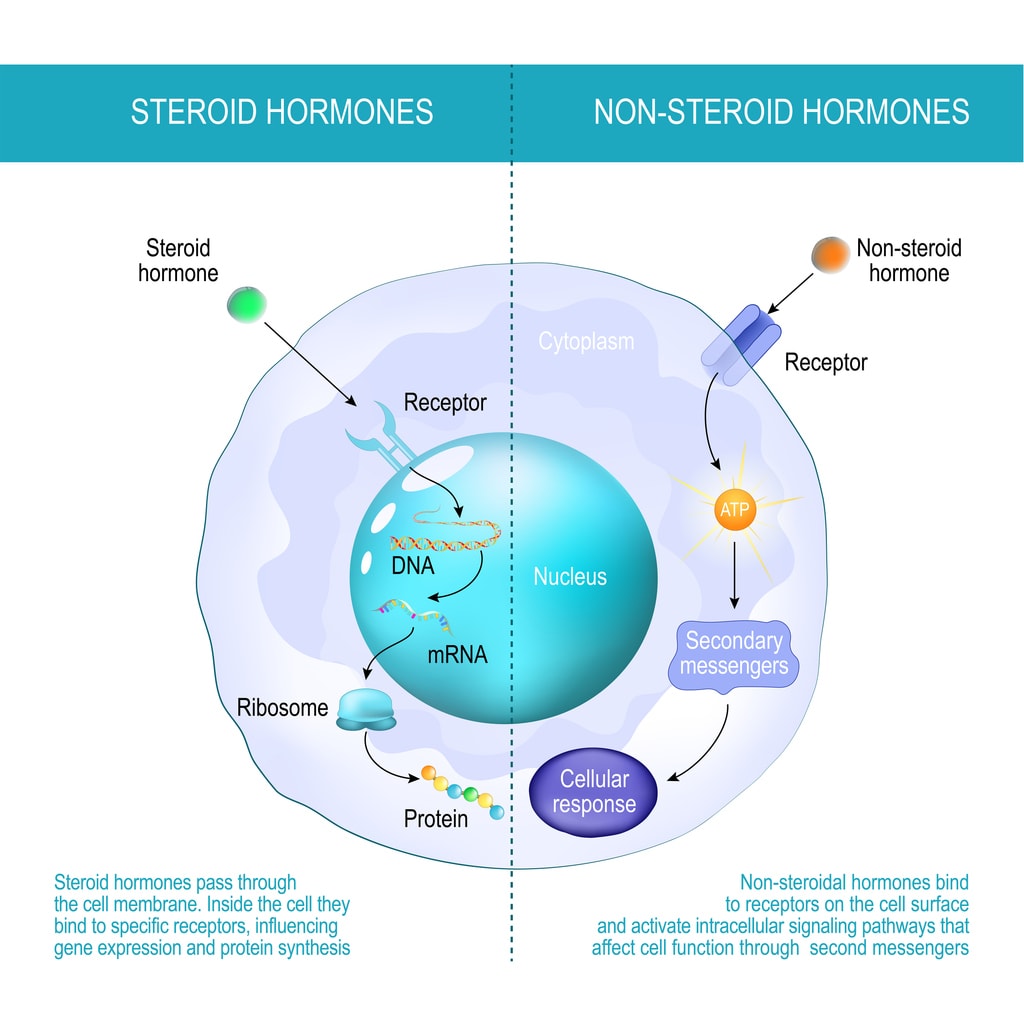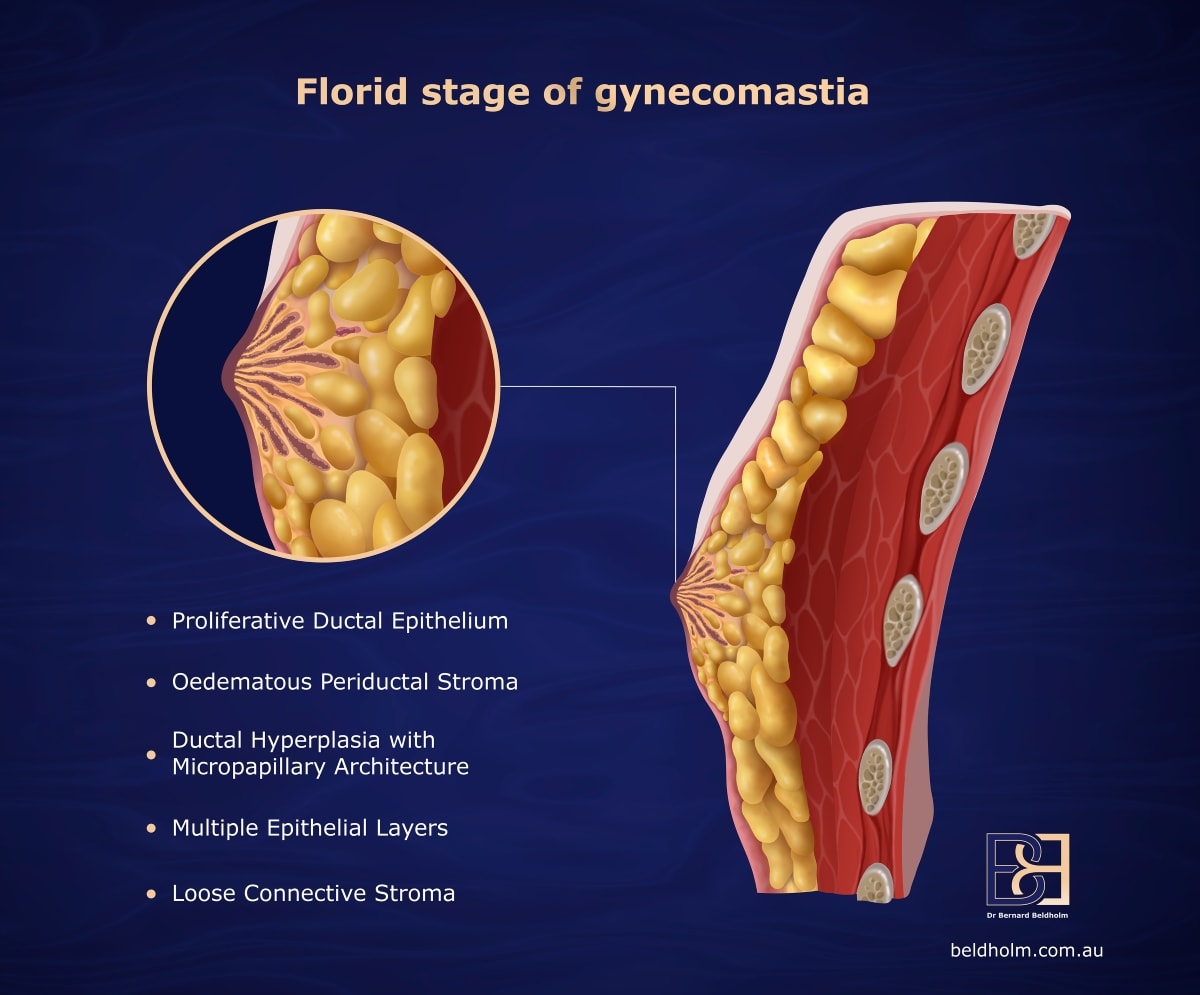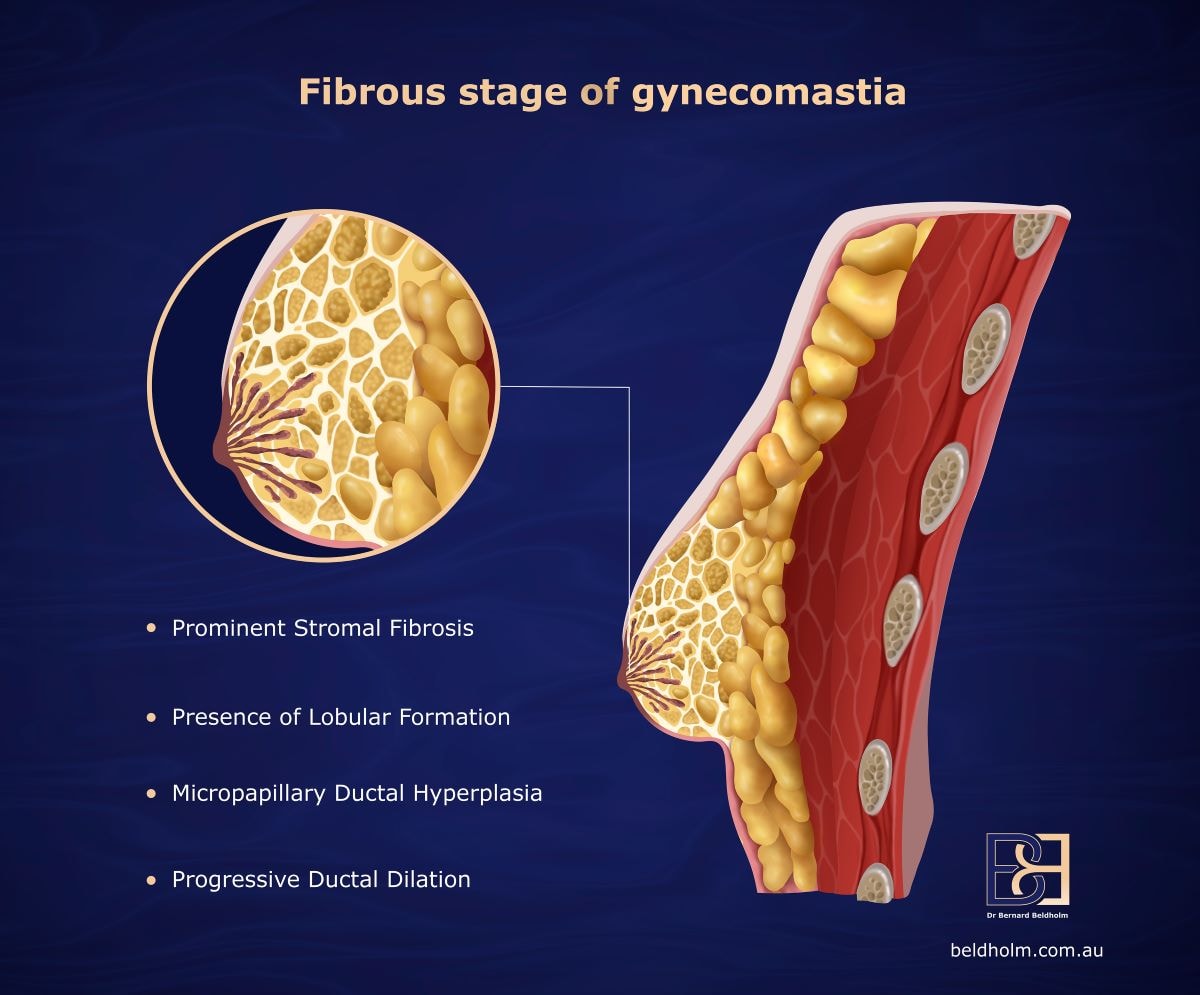During periods of intensive fat loss for bodybuilders getting stage-ready, the relative prominence of gynaecomastia becomes more noticeable. As body fat decreases, any existing breast tissue becomes more apparent against the chiseled contours of the chest. This can lead to aesthetic discrepancies that are especially concerning for competitive bodybuilders whose success often hinges on the precision of their physical appearance. Achieving a balanced and symmetrical look is paramount in bodybuilding, and a protruding Nipple areola can disrupt this.
Book your appointment online now
Key Takeaways
- Gynaecomastia in bodybuilders is linked to hormonal imbalances, often exacerbated by anabolic steroid use that increases oestrogen levels.
- Non-surgical treatments like hormone management, dietary changes, and exercise can effectively reduce symptoms and prevent gynaecomastia.
- For severe cases, surgical options like male breast reduction surgery can reshape the chest.
Understanding Gynaecomastia in Bodybuilders

Gynaecomastia is characterized by the enlargement of male breast tissue, a condition that can significantly affect bodybuilder gynaecomastia who are often in pursuit of a chiseled and defined chest. For those in the bodybuilding community, the use of anabolic steroids can disrupt hormonal balances, making them particularly susceptible to this condition.
Recognising gynaecomastia and its underlying causes is crucial for effective management and treatment.
What is Gynaecomastia?

Gynaecomastia is defined as the abnormal enlargement of breast tissue in men, often linked to hormonal imbalances. This condition is characterised by swelling and tenderness in the breast area and can sometimes be distinguished by enlarged breast tissue or even nipple discharge.
These symptoms distinguish gynaecomastia from other breast-related issues, emphasising the need for a tailored treatment approach, especially for bodybuilders focused on a masculine chest contour.
Causes of Gynaecomastia in Bodybuilders

Hormonal imbalances, especially an elevated oestrogen level compared to testosterone, significantly contribute to gynaecomastia in bodybuilders. Anabolic steroids play a major role in hormonal disruptions, increasing the risk of developing gynaecomastia.
The disruption caused by steroids can elevate oestrogen levels, making it more likely for bodybuilders to develop excess breast tissue.
Symptoms and Diagnosis
Common symptoms of gynaecomastia include breast tenderness, sensitivity, and a noticeable increase in breast size. In some cases, nipple discharge may also be present.
A GP usually diagnoses gynaecomastia by assessing the extent of breast tissue enlargement and recommending suitable treatment options, often collaborating with a qualified specialist surgeon FRACS.
Role of Anabolic Androgenic Steroids (AAS)
Anabolic steroids significantly contribute to the development of gynaecomastia in bodybuilders. Misusing these substances can cause excessive oestrogen production, a primary driver of gynaecomastia.
Athletes and bodybuilders use these steroids to boost muscle mass and performance, but the resulting hormonal imbalances can have serious repercussions.
How Anabolic Steroids Work

Anabolic steroids boost muscle growth by binding to androgen receptors and stimulating gene transcription essential for muscle development. However, these steroids can cause hormonal imbalances that hinder muscle development and promote gynaecomastia tissue growth in men.
Hormonal therapies, such as testosterone replacement therapy, can help mitigate these symptoms by recreating a balance between oestrogen and testosterone levels.
Steroid Induced Gynaecomastia
Using anabolic steroids can cause serious hormonal disruptions, greatly increasing the risk of gynaecomastia. These steroids frequently convert to oestrogen in the body, promoting breast tissue growth.
Regular blood tests for hormone levels are essential for early identification of imbalances, reducing the risk of gynaecomastia.
Health Risks of Anabolic Steroid Use
Excessive use of anabolic steroids is associated with numerous health issues, including cardiovascular diseases, liver damage, and psychological disorders. Misusing these steroids can lead to severe hormonal imbalances and potentially fatal complications.
Bodybuilders must be aware of these risks and consider alternatives.
Non-Surgical Treatments for Gynaecomastia

Non-surgical treatments for gynaecomastia include lifestyle changes, hormone management, and dietary supplements. These methods target the underlying causes of gynaecomastia and aim to reduce excess breast tissue without surgery.
Hormone Management
Hormone therapy, such as testosterone replacement therapy, can be crucial in managing gynaecomastia caused by hormonal abnormalities. If hormonal imbalances are identified, discussing potential hormone therapy or prescription options with a healthcare provider is necessary.
Diet and Supplements
A balanced diet and regular physical activity can support hormonal health and prevent gynaecomastia. Certain vitamin supplements, such as vitamin D and cruciferous vegetables, can help maintain hormonal balance.
Consulting a qualified doctor or dietitian about supplements is crucial to avoid unwanted side effects.
Exercise and Weight Management
For bodybuilders, achieving a stage-ready physique often means reaching extremely low body fat percentages. This low body fat accentuates underlying muscle groups, but it can also make any glandular tissue more visible. This means that, paradoxically, as a bodybuilder reduces his overall body fat, gynaecomastia can become more pronounced because there is less surrounding fat.
The prominence of gynaecomastia, despite low body fat, can be distressing for athletes who depend on symmetry and aesthetics for their competitive edge. This is particularly true during competitions where judges scrutinise every aspect of an athlete’s physique. For this reason, many bodybuilders seek medical solutions to treat the issue, particularly if it begins to impair their performance.
Surgical Options for Gynaecomastia

Gynaecomastia development is a dynamic process that unfolds through three distinct stages over approximately 12 months: the florid, intermediate, and fibrous stages. Understanding these stages can provide insights into how the condition progresses and inform the selection of appropriate interventions.

The florid stage is the initial phase in which gynaecomastia begins to manifest. This stage typically lasts between four to six months and is characterized by active proliferation of glandular tissue. During this time, individuals might experience tenderness or pain in the breast area as the tissue starts to develop. This stage is crucial as it marks the period where hormonal imbalances lead to significant changes in breast tissue. Intervention at this stage, whether through lifestyle changes, medication, or dietary adjustments, can sometimes impede further development and ease discomfort.

Following the florid stage, gynaecomastia progresses to the intermediate stage. This phase spans approximately the next four months and represents a transition from active tissue proliferation to a phase where growth gradually stabilizes. While the breast tissue remains soft and somewhat pliable, there is less tenderness compared to the florid stage. During the intermediate stage, stabilization occurs, and individuals often notice changes in the texture and firmness of the tissue. It’s during this window that some interventions might still be effective in reducing the overall size of the glandular tissue. Given that natural resolution can occur for some, it remains a hopeful period for monitoring and reassessing the need for further treatment.

The final stage of gynaecomastia development is the fibrous stage, which typically occupies the last four months of the 12-month span. At this point, the breast tissue has become more dense and fibrous, with the connective tissue hardening over time. This transition to fibrous tissue signals the conclusion of active proliferation, resulting in a more permanent change in the chest contour. Interventions during this stage tend to focus more on surgical options, as the tissue becomes less responsive to non-surgical treatment methods.
Male Breast Reduction Surgery
Male breast reduction surgery involves the extraction of excess fat and glandular tissue from the chest. This procedure is particularly beneficial for bodybuilders suffering from gynaecomastia as it effectively reduces the appearance of enlarged breasts.
Surgical Techniques

Gynaecomastia surgical techniques include direct excision of glandular tissue and liposuction-assisted mastectomy. These techniques aim to remove at least 95 percent of glandular tissue, ensuring effective correction through gynaecomastia surgery.
In severe cases, additional procedures such as nipple transposition may be necessary.
Post-Surgery Recovery and Results
Post-surgery recovery involves wearing compression garments for about four weeks to aid healing and reduce swelling. Most patients can return to work and resume physical activities within a few days.
Prevention Strategies
Preventing gynaecomastia requires lifestyle modifications, hormone management, and avoiding substances that disrupt hormonal balance.
These strategies can greatly reduce the risk of developing this condition, especially for bodybuilders.
Avoiding Anabolic Steroids
Anabolic steroids pose significant health risks, including liver damage, cardiovascular issues, and hormonal imbalances. Avoiding these steroids and opting for alternatives like proper nutrition can help bodybuilders maintain muscle mass without the associated risks.
Monitoring Hormone Levels
Monitoring hormone levels is essential for bodybuilders to prevent conditions like gynaecomastia. Regular check-ups enable early identification of hormonal imbalances, allowing timely adjustments to training and supplement plans.
Smart Lifestyle Choices
Smart lifestyle choices like a balanced diet and regular exercise play a vital role in preventing gynaecomastia. Avoiding anabolic steroids and reducing alcohol consumption are crucial for maintaining hormonal balance.
Cardiovascular and strength training exercises help minimise gynaecomastia’s appearance.
Summary
Understanding gynecomastia and its impact on bodybuilders is essential for effective management and treatment. By focusing on the causes, exploring non-surgical and surgical options, and considering the psychological effects, bodybuilders can better navigate this condition. Adopting sustainable lifestyle choices and avoiding anabolic steroids are key strategies for prevention. With the right approach, bodybuilders can achieve a masculine chest and maintain their well-being.
Book your appointment online now
Frequently Asked Questions
What causes gynaecomastia in bodybuilders?
Gynaecomastia in bodybuilders usually comes from hormonal imbalances, especially linked to anabolic steroid use that raises oestrogen levels. It’s a common issue, so be mindful of your hormone health if you’re lifting heavy.
How can gynaecomastia be treated without surgery?
You can treat gynaecomastia without surgery by managing hormone levels, adjusting your diet, using supplements, and incorporating exercise into your routine. It’s all about balance.
What are the risks associated with anabolic steroid use?
Using anabolic steroids can really mess with your health, causing serious problems like heart disease, liver damage, and mental health issues. It’s definitely not worth the risk!
How can bodybuilders prevent gynaecomastia?
To prevent gynaecomastia, bodybuilders should steer clear of anabolic steroids, keep an eye on their hormone levels, and embrace a healthy lifestyle. It’s all about being mindful of what you put in your body and how you take care of it!





